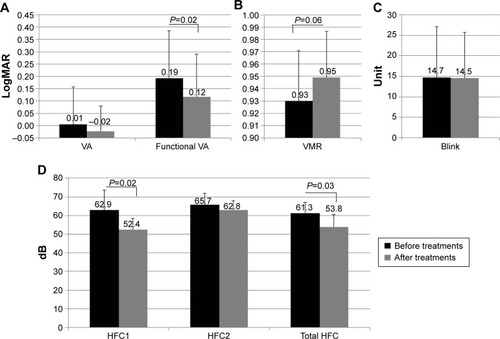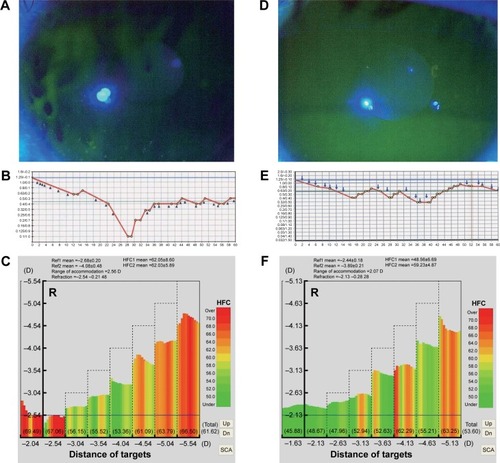Figures & data
Table 1 Profile of symptoms, baseline clinical signs, and treatments
Figure 1 Functional VA and accommodative parameters before and after additional treatments.
Abbreviations: HFC, high-frequency component; logMAR, logarithm of the minimum angle of resolution; VA, visual acuity; VMR, visual maintenance ratio.

Figure 2 Fk-map and visual changes over time in a young patient.
Abbreviations: BUT, break-up time; DE, dry eye; Fk-map, frequency of kinetic reaction-map; HFC, high-frequency component; VA, visual acuity.

Figure 3 Fk-map and visual changes over time in an elderly patient.
Abbreviations: DE, dry eye; BUT, break-up time; Fk-map, frequency of kinetic reaction-map; HFC, high-frequency component; VA, visual acuity.

Figure 4 The mechanism of occurrence of dry eye symptoms. Image defocus due to tear instability represents visual impairment.
Abbreviations: AMF, accommodative microfluctuation; DE, dry eye.

